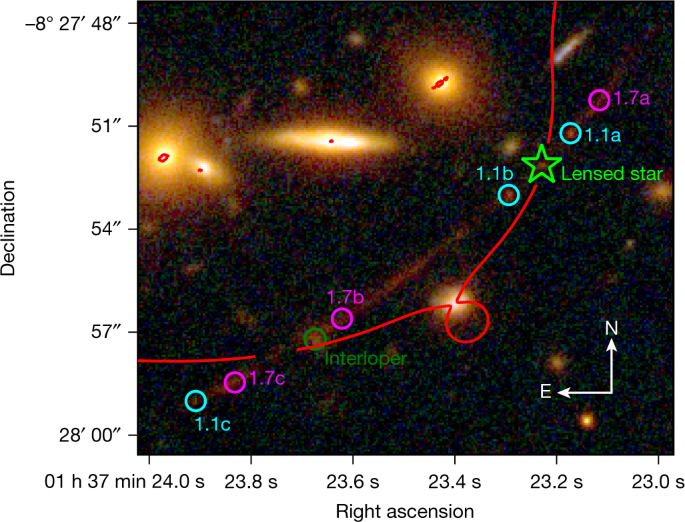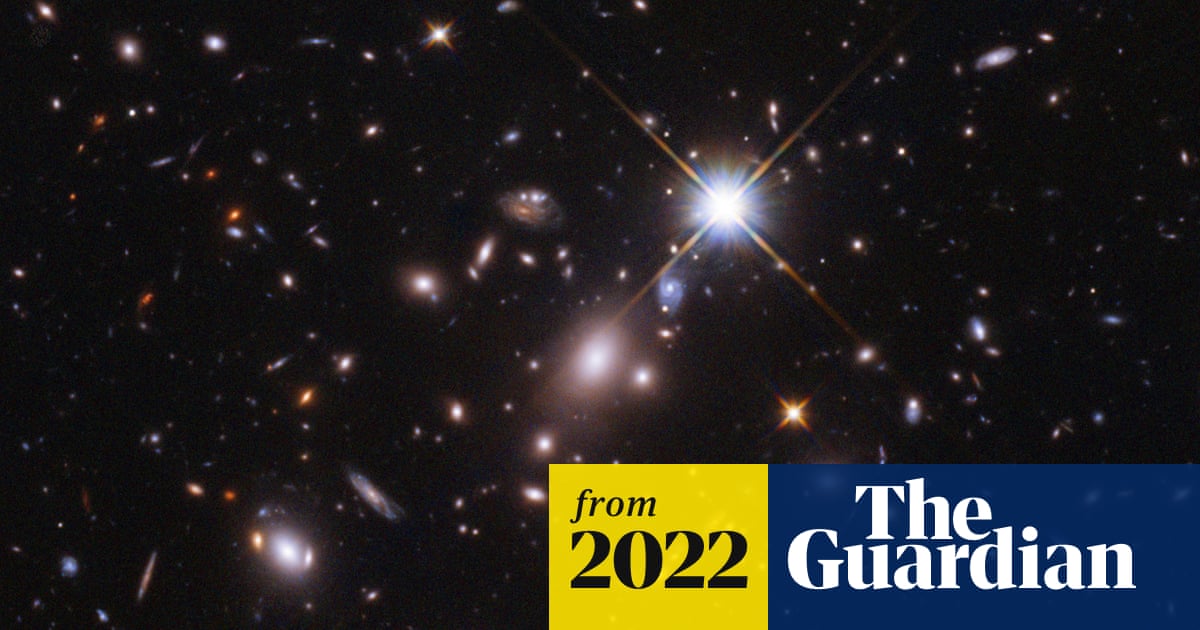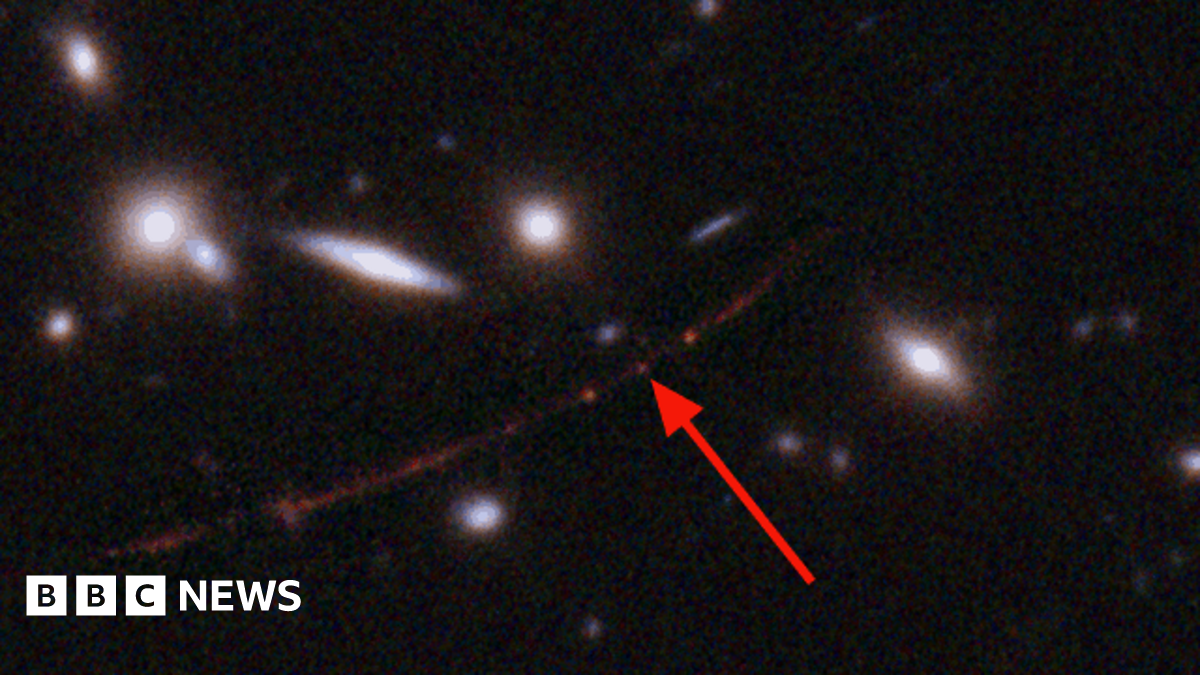
A highly magnified star at redshift 6.2 - Nature
A massive star at a redshift of 6.2, corresponding to 900 million years after the Big Bang, is magnified greatly by lensing of the foreground galaxy cluster WH0137–08.
"... observations of a more distant and persistent magnified star at a redshift of 6.2 ± 0.1, 900 million years after the Big Bang..."

Distant star found by Hubble telescope may be earliest we will ever see
Light from Earendel has travelled for an estimated 12.9bn years to reach Earth
The most distant star ever seen has been captured by the Hubble space telescope in images that appear to give a remarkable glimpse into the ancient universe.
The light from this object has taken 12.9 billion years to reach us.
These stars – the ancestors of those we see in the sky today – formed before the universe was filled with the heavy elements produced by successive generations of massive stars. There are theoretical predictions, but no direct evidence, of an early generation of stars made only of primordial hydrogen and helium.

Hubble: 'Single star' detected at record-breaking distance
The Hubble telescope sees an individual star whose light has taken 12.9 billion years to reach us.
'Theory tells us that the very first stars to shine in the Universe comprised only hydrogen and helium. Astronomers call them Population III stars. Only when these stars and their descendants had fused heavier elements did the cosmic environment change to the one we recognise around us today.
But a 50-solar-mass star would only burn for a very short time, perhaps a million years at most before it ran out of fuel and collapsed and died. For a pioneer star to exist 900 million years after the Big Bang, it would need to have grown out of a long-surviving, isolated and unpolluted cloud of gas. Not impossible, but arguably a stretch too far.
"Yes, we expect that Earendel is more likely to be a star that has been a little bit enriched in heavier elements, but not so much as the local stars around us today," Mr Welch said.
"There is a small chance that it's a Population III star. A few other studies predict you could get them in the outskirts of some galaxies. But that's something we're going to need much more detailed follow-up from other telescopes such as James Webb." '
